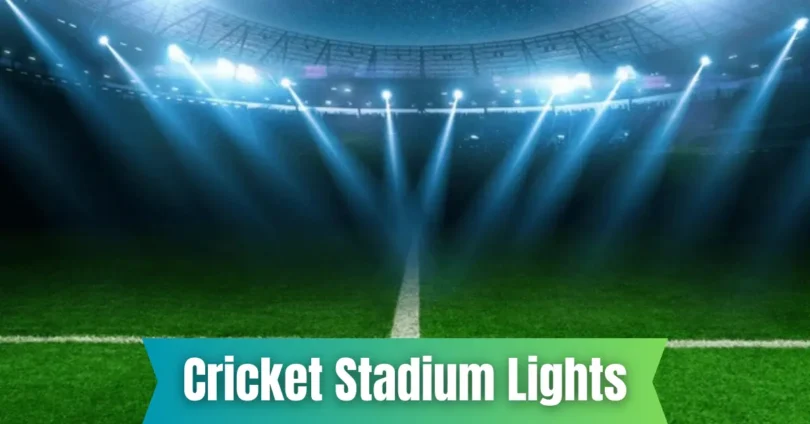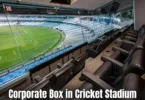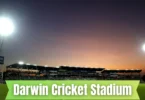Cricket stadium lights play a crucial role in ensuring a great game experience. These lights allow matches to continue even after the sun goes down, ensuring clear visibility for both players and spectators. Good-quality cricket stadium lights also enhance the viewing experience for fans, whether they are watching live or on television.
Without the right lighting, it would be nearly impossible to hold evening games or tournaments, which is why investing in high-performance cricket stadium lights is so important for modern cricket venues.
Types of Cricket Stadium Lights
When it comes to cricket stadium lights, there are three main types that are commonly used: LED lights, Metal Halide lights, and High-Pressure Sodium lights. Each type has its own features and benefits.
LED Lights
- Energy Efficient: LED lights consume less power, which helps reduce electricity costs.
- Long Lifespan: They last much longer than traditional lights, reducing the need for frequent replacements.
- High Brightness: LED lights provide bright, uniform lighting across the field.
- Environmentally Friendly: LEDs are free from harmful chemicals like mercury, making them a safer option.
Metal Halide Lights
- Bright Light Output: Metal Halide lights offer powerful brightness, ideal for large stadiums.
- Faster Start-Up: These lights light up quickly compared to some other types.
- Color Accuracy: They provide excellent color rendering, making the game look sharp and clear on TV.
- Higher Power Consumption: Metal Halide lights are less energy-efficient than LEDs.
High-Pressure Sodium Lights
- Cost-Effective: These lights are usually cheaper upfront compared to LEDs and Metal Halide lights.
- High Light Intensity: They provide strong, intense lighting, which is great for large areas.
- Energy-Intensive: High-Pressure Sodium lights use more power than LEDs and can increase running costs.
- Yellowish Light: The light tends to be yellow, which may affect the color clarity for players and viewers.
Comparison of Features and Benefits
- Energy Efficiency: LED lights lead in terms of energy savings, followed by Metal Halide, with High-Pressure Sodium being the least energy-efficient.
- Brightness: Metal Halide lights are typically brighter than LEDs and High-Pressure Sodium lights, but LEDs offer more uniform brightness.
- Lifespan: LEDs have the longest lifespan, making them the best investment in the long term.
- Cost: High-Pressure Sodium lights are the cheapest to buy, but LEDs and Metal Halide lights offer better value over time due to their durability and efficiency.
Importance of Proper Lighting in Cricket
Proper lighting is vital for a smooth and enjoyable cricket game, whether it’s played during the day or at night. It impacts players, the audience, and how the game is broadcasted.
Impact on Visibility and Player Performance
- Clear Vision for Players: Good lighting ensures players can see the ball clearly, whether it’s a fast bowler or a spinning delivery.
- Reduces Eye Strain: Proper lighting helps reduce strain on players’ eyes, allowing them to stay focused throughout the match.
- Improves Safety: Well-lit fields help players avoid accidents or injuries by giving them a clear view of their surroundings.
- Ensures Fair Play: Equal distribution of light across the ground ensures no player has an unfair advantage due to poor lighting.
How Lighting Affects the Audience Experience
- Enhanced Viewing: Bright and even lighting ensures fans can clearly see the action, whether in the stadium or watching from home.
- Creates Atmosphere: Good lighting adds to the excitement and drama of the game, especially during night matches or big events.
- Comfortable Experience: Proper lighting reduces glare, making the game easier and more enjoyable to watch, whether it’s on-screen or live.
- Visibility for Fans in Stadium: Fans in the stadium experience better visibility, allowing them to enjoy every moment of the game.
Role in Broadcasting and TV Coverage
- Sharp Image Quality: Proper lighting improves the quality of broadcast images, ensuring viewers can see the game clearly on TV.
- Highlighting Key Moments: Good lighting helps cameras capture critical moments like boundaries, wickets, and player reactions with clarity.
- Enables Night-Time Matches: High-quality lighting makes it possible to play cricket at night without sacrificing the viewing experience.
- Supports Multiple Camera Angles: Even and bright lighting ensures that all camera angles capture the best shots, making the broadcast more dynamic and engaging.
Key Features of Cricket Stadium Lights
The key features of cricket stadium lights ensure optimal performance, safety, and fan experience. Let’s dive into the most important aspects to consider.
Brightness and Uniformity
- Even Lighting Across the Field: Lights should be positioned to provide uniform brightness across the entire playing area, ensuring no dark spots.
- High Lumen Output: The lights must be bright enough for clear visibility during evening or night matches, allowing players and spectators to enjoy the game.
- Prevents Shadows: Well-distributed lighting minimizes shadows, ensuring that players can track the ball without obstruction.
- Consistency in Brightness: Consistent brightness throughout the match helps maintain the quality of play and viewing.
Energy Efficiency
- Lower Operating Costs: Energy-efficient lights like LEDs consume less power, saving money on electricity bills over time.
- Reduced Carbon Footprint: By using less energy, stadiums can reduce their environmental impact, which is important for sustainability.
- Longer Lifespan: Energy-efficient lights last longer, reducing the need for frequent replacements and maintenance.
- Instant Brightness: Many modern energy-efficient lights, like LEDs, reach full brightness almost immediately, providing quicker setup times.
Durability and Weather Resistance
- Built to Last: Cricket stadium lights must withstand the wear and tear of constant use, including exposure to harsh weather conditions.
- Resistant to Rain and Wind: Good-quality lights are designed to resist rain, humidity, and strong winds, ensuring they continue working during unpredictable weather.
- Impact-Resistant: They should be built to handle accidental impacts, especially since stadiums often experience high traffic and environmental stress.
- Corrosion-Resistant: Lights made with weatherproof materials prevent rust and damage, especially in coastal or humid regions.
Technological Advancements in Cricket Stadium Lights
Technology is continually improving the way cricket stadium lights are designed and operated. Let’s explore some of the latest advancements in stadium lighting.
Smart Lighting Systems
- Automated Control: Smart lighting systems allow stadium operators to control the lights remotely, adjusting brightness and timing automatically.
- Energy Optimization: These systems can adjust the light levels based on real-time requirements, ensuring energy is used efficiently.
- Adaptive Lighting: Smart systems can change lighting conditions depending on the time of day or weather, providing optimal visibility for different game situations.
- Integration with Event Schedules: The lights can be programmed to switch on or off based on match timings, reducing human error and saving energy.
LED Technology and Its Benefits
- High Energy Efficiency: LED lights use significantly less power compared to traditional lights, leading to major savings in electricity costs.
- Longevity: LEDs last longer, with some lasting up to 50,000 hours or more, reducing maintenance and replacement costs.
- Improved Lighting Quality: LEDs offer bright, crisp lighting with better uniformity, ensuring players and spectators experience clear visibility.
- Environmentally Friendly: LEDs contain no harmful chemicals like mercury, making them a safer and more sustainable option for stadiums.
Future Trends in Stadium Lighting
- Smart Integration with IoT: Future lighting systems may be connected to the Internet of Things (IoT), enabling better data collection and management for optimized lighting control.
- Solar-Powered Lights: Solar technology is being explored to make stadium lighting more sustainable by harnessing the power of the sun.
- Dynamic Lighting Effects: As part of entertainment upgrades, stadiums may introduce more dynamic lighting effects, such as changing colors or patterns, to enhance fan engagement.
- Higher Efficiency LEDs: Future LEDs will become even more energy-efficient, providing better lighting with less power consumption, contributing to both cost savings and environmental protection.
Challenges in Installing Cricket Stadium Lights
While the benefits of good lighting in cricket stadiums are clear, there are several challenges to consider when installing and maintaining these systems.
High Costs and Maintenance
- Initial Setup Costs: The installation of high-quality lighting systems can be very expensive, especially when using advanced technologies like LEDs or smart lighting.
- Ongoing Maintenance: Even with long-lasting lights, regular maintenance is necessary to ensure the system operates correctly and lasts its full lifespan.
- Replacement Costs: Although LEDs have a long lifespan, replacing other types of lights like Metal Halide can be costly due to the technology’s shorter lifespan.
- Labor and Equipment: The maintenance and repair work often require skilled labor and specialized equipment, adding to the overall costs.
Space and Installation Requirements
- Proper Placement: Installing lights requires precise placement to ensure even lighting across the entire field. This can be challenging, especially in large or uniquely designed stadiums.
- Structural Support: Stadiums may need additional structural support for mounting lights, such as towers or roofs strong enough to hold the weight of the lights.
- Installation Time: Setting up a lighting system takes time, which may interfere with the stadium’s schedule or operations.
- Compliance with Regulations: There are often strict regulations governing lighting standards, which can add complexity to the installation process.
Environmental Factors Like Weather
- Extreme Weather Conditions: Cricket stadium lights need to be built to withstand extreme conditions like heavy rain, snow, or high winds, which can cause damage if not properly protected.
- Temperature Fluctuations: The lights must perform well in both hot and cold climates, ensuring consistent brightness without failing in extreme temperatures.
- Corrosion and Rust: In coastal areas or regions with high humidity, stadium lights are at risk of rust and corrosion, requiring specialized materials and coatings for durability.
- Dust and Debris: Outdoor environments expose lights to dust and debris, which can affect performance and increase maintenance needs.
Top Cricket Stadiums with Advanced Lighting Systems
Several cricket stadiums around the world have set the standard with their advanced lighting systems. These stadiums provide optimal visibility for both players and spectators, enhancing the overall game experience.
Melbourne Cricket Ground (MCG) – Australia
- State-of-the-Art LED Lighting: The MCG features high-quality LED lighting that ensures uniform brightness across the entire field.
- Broadcast-Friendly: The lights are designed to meet the high standards required for international broadcasts, ensuring clear visuals.
- Sustainability Focus: The MCG has incorporated energy-efficient lighting systems to reduce power consumption and costs.
- Advanced Control Systems: The stadium’s lighting is controlled via smart systems that allow easy adjustments for different events.
Eden Gardens – India
- Metal Halide Lighting: Eden Gardens uses powerful metal halide lights, providing excellent brightness for night games.
- Iconic Lighting Setup: The lighting system at Eden Gardens is well-known for creating a spectacular atmosphere during major matches.
- Precision Lighting Angles: The stadium’s lighting ensures no shadows on the field, giving both players and viewers clear visibility.
- Regular Upgrades: The stadium continuously upgrades its lighting system to stay ahead with modern technologies.
Lord’s Cricket Ground – England
- Efficient LED Lighting: Lord’s has transitioned to LED lighting, improving energy efficiency and ensuring a brighter, more consistent playing field.
- Optimal Lighting for All Events: The lighting system adapts to various game formats, from test matches to T20s, to ensure perfect conditions.
- Historical Integration: While upgrading its lighting, Lord’s maintains its historic charm, combining modern technology with traditional design.
- Fan Experience Focus: The advanced lighting setup enhances the fan experience, ensuring clear visuals even from the stands.
Wankhede Stadium – India
- High-Intensity Floodlights: Wankhede Stadium uses powerful floodlights, ideal for the intense lighting needs of high-profile matches.
- Excellent Coverage: The lighting system provides uniform coverage across the pitch and seating areas, enhancing the visibility for players and fans alike.
- Energy-Efficient Upgrades: Recent updates to the lighting system focus on reducing energy consumption without compromising performance.
- Broadcasting Excellence: The lights ensure a top-tier experience for television broadcasts, offering excellent image clarity.
Sydney Cricket Ground (SCG) – Australia
- Advanced LED Technology: The SCG uses LED lights that ensure lower power consumption while providing bright, consistent lighting.
- Night-Time Play Compatibility: The stadium’s lighting is designed to enhance playability for evening games and night matches.
- Sustainability Focus: The SCG has invested in eco-friendly lighting solutions to help reduce the stadium’s carbon footprint.
- Customizable Lighting Levels: The lights can be adjusted to suit different types of events, from international cricket matches to local fixtures.
Common FAQs on Cricket Stadium Lights
Why is good lighting important in cricket stadiums?
Good lighting ensures players can see the ball clearly and play safely. It also helps spectators and TV viewers enjoy the game without any visibility issues.
What are the different types of cricket stadium lights?
The most common types are LED lights, Metal Halide lights, and High-Pressure Sodium lights. Each has its own benefits, with LEDs being the most energy-efficient.
How long do cricket stadium lights last?
LED lights can last up to 50,000 hours or more, making them the most durable option. Metal Halide lights last less, around 10,000 hours.
Are cricket stadium lights energy-efficient?
Yes, modern lights like LEDs are highly energy-efficient. They use less power, which helps save on electricity bills and reduces the stadium’s environmental impact.
Can cricket stadium lights work in all weather conditions?
Yes, high-quality cricket stadium lights are designed to withstand harsh weather conditions like rain, wind, and extreme temperatures, ensuring they work reliably.
Do cricket stadium lights affect TV broadcasts?
Yes, the right lighting is essential for clear TV broadcasts. It ensures that the game is captured with bright, uniform lighting, providing a sharp image for viewers.
Conclusion
Cricket stadium lights play a key role in creating the perfect environment for the game, ensuring clear visibility for players and enhancing the experience for fans. From LED technology to smart lighting systems, top stadiums around the world are using advanced lighting solutions to improve the game.
Whether it’s energy efficiency, uniform brightness, or adaptability to different events, these lighting systems are designed to meet the needs of modern cricket. As technology continues to evolve, we can expect even better lighting setups that will make every match more exciting and enjoyable for everyone.





